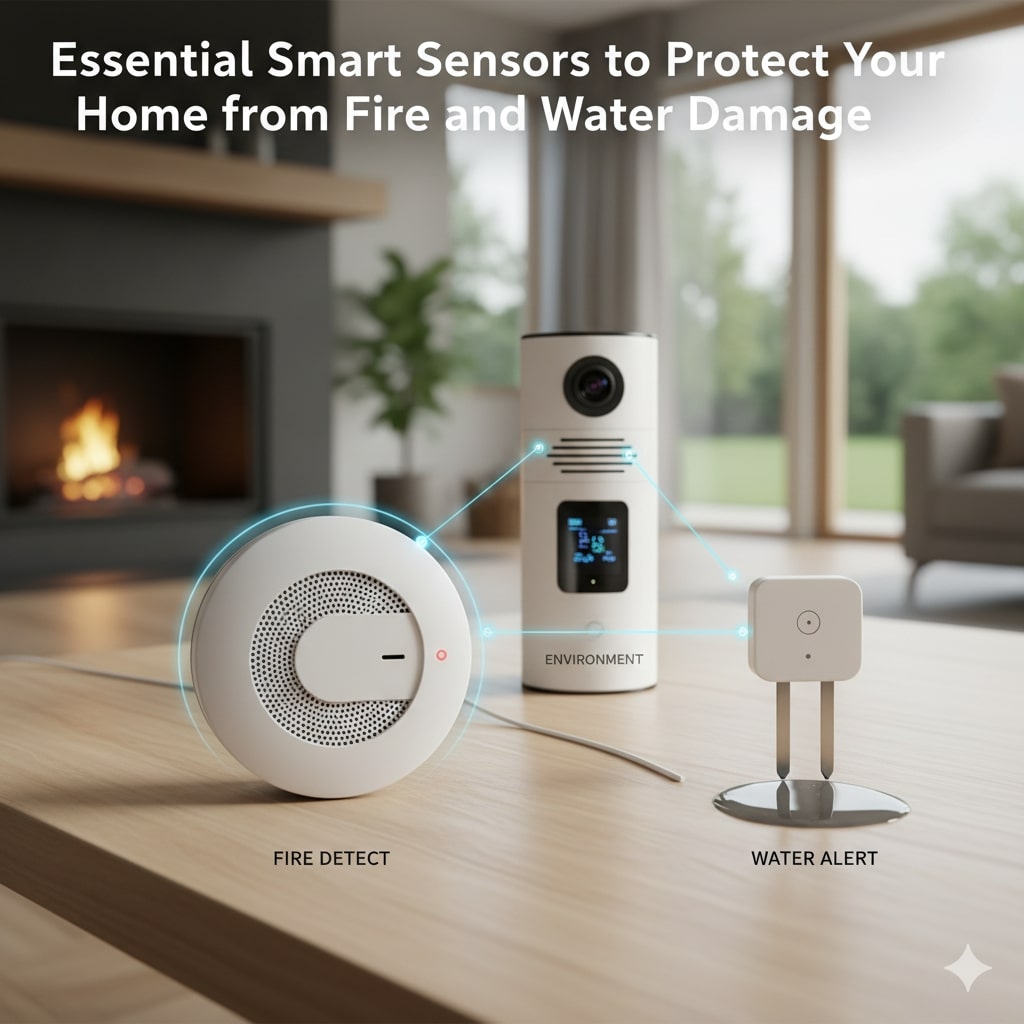In today’s homes, protecting against fire and water damage is more crucial than ever and smart sensor technology offers advanced solutions that help homeowners safeguard their property efficiently. Smart sensors detect early signs of danger, such as smoke, heat, water leaks and moisture and send real-time alerts to homeowners’ smartphones, allowing prompt action to prevent costly damages.
Fire Protection
Smart fire sensors go beyond traditional smoke detectors by combining multiple detection technologies such as smoke, heat and gas leak sensors. These devices can identify early fire indicators and immediately alert homeowners with notifications and audible alarms. Some smart smoke detectors, like the Nest Protect, provide voice alerts specifying the type of hazard and connect to smartphone apps for remote monitoring. They also integrate with home automation systems to enable safety features such as automatic HVAC shut-off, which limits the spread of smoke and fire damage. These systems enhance peace of mind by providing constant, connected vigilance for fire hazards.
Smart Sensors for Water Damage Protection
Water damage sensors are essential for preventing floods and leaks from causing severe damage. These sensors detect water presence, moisture, or changes in water pressure near vulnerable areas such as basements, water heaters, sinks and washing machines. Upon detecting a leak or rising water levels, smart water sensors send instant alerts to homeowners and can integrate with home automation to automatically shut off the water supply, minimizing damage. Popular water monitoring solutions include smart leak detectors with Wi-Fi connectivity and app control, offering remote notifications and easy installation. Advanced models also track temperature and humidity to prevent pipe freezing and water-related issues before they become critical.
Additional Smart Sensors for Home Safety
Beyond fire and water sensors, other smart sensors contribute to overall home protection:
- Low-temperature sensors prevent freezing pipes by alerting users to dangerous drops in temperature.
- energy monitoring detect irregular power use that could signal potential fire risks.
- Motion sensors notify homeowners about unusual activity, aiding in security and safety through early detection of intrusions or accidental openings.
Incorporating these smart sensors into an integrated home safety system empowers homeowners to prevent disasters proactively, improve response times and ultimately protect their homes and valuables more effectively.
This combination of smart fire and water sensors, along with other safety devices, creates a robust defense against the most common and costly home hazards.
If a detailed, user-friendly guide article with SEO is preferred, it can be tailored further based on the target audience or website style.
Related How do smart water sensors function?
Smart water sensors detect the presence, level, or quality of water using various principles. Common types include resistive sensors, which measure the change in electrical resistance when water bridges between sensor electrodes, indicating water’s presence. Ultrasonic sensors emit pulses toward the water surface and measure the time it takes for the echo to return to calculate the water level. Capacitive sensors measure changes in capacitance caused by water acting as a dielectric between two electrodes. Other sensors use pressure or light scattering principles to detect water quality or levels. These sensors typically have integrated microcontrollers that process the signals and communicate data wirelessly to apps or home systems for alerts and actions.
protect a sensor from water?
To protect sensors, especially electronic water sensors, from water damage:
- Use waterproof housings or enclosures rated for water resistance (e.g., IP67 or higher).
- Employ non-contact sensing technologies like ultrasonic or capacitive that do not require direct water contact.
- Seal wiring and connections with waterproof coatings or gaskets.
- Position sensors in locations where they are exposed only to necessary contact with water but shielded from splashes or submersion unless designed for that.
Which sensors are used as a water-saving upgrade in smart homes?
- Smart water flow meters that measure real-time water usage and detect leaks.
- Water leak detectors that alert users to pipe leaks or appliance failures.
- Moisture sensors in soil or landscaping that control irrigation systems based on soil hydration levels.
- shutoff valves triggered automatically or remotely to stop water flow during leaks.










